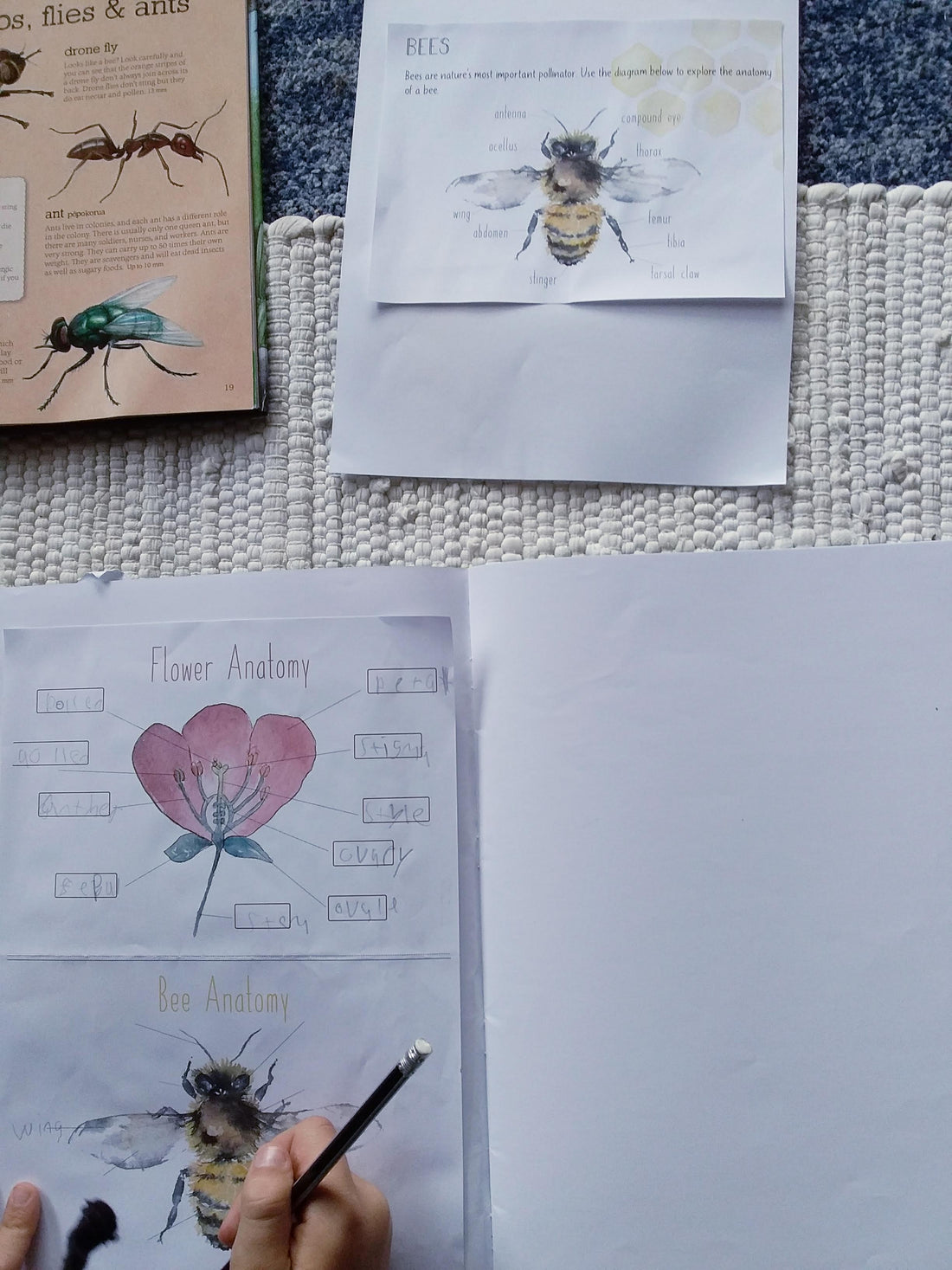
Pollination Unit
Share
I have become a big advocate for listening to the child and hearing what is important in their world. That is the starting point for this unit on pollination.
My son, who is very empathetic towards living things, had been talking about spiders, looking at worms and generally interested in small living things. As one of my key focus areas this year is zoology I thought this would be a great way to link the two concepts.
I am not a keen gardener but the previous owners had grown a beautiful camilla that we used for our study.
I used a free unit from the NZ science hub as the basis of our study and incorporated Montessori materials.
The key learning ideas that I wanted to introduce through this unit were:
- flowering plants require pollination to bring male and female gametes together
- plants cannot move so they need animals or wind to transfer pollen
- plants attract birds and insects by colour, scent and reward
- wind-pollinated flowers need to produce a lot of pollen.
At the start of the unit one thing we did was look at flower anatomy and discussed the male and female parts of the flower. We linked this to MRS GREN, which we had covered earlier in the year. The children were able to tell me why the flower was a living thing (according to western science).

We labelled the parts of the flower. To lower the workload for M, he just copied a few of the parts that were essential to knowing about plant reproduction.

The vocabulary of pollinator and vector was really interesting to my learners and M was particularly fascinated in the life cycle of the bee (this resource is not included in my pollination pack)


As many of you know, we love going for walks in the bush. The day after the above learning I was delighted to see a kereru (native wood pigeon) in our local bush. This is very exciting as they are not very common where I live. The other exciting thing that linked to our pollination unit was that these birds poo out berry seeds which linked to our learning about reproduction.

To dig into the idea of pollination a bit more and to work on the concept of reading for meaning I made a pollination card set. These were introduced after we had already talked through and role played pollination. These were made with the needs of a particular learner in mind. That learner and I are currently working on reading a paragraph and thinking what the main idea is. The area where you traditionally see the name or concept in the traditional Montessori 3/5 part cards has been replaced with a question. Additionally the pictures provide an opportunity for them to synthesise the reading material and think which picture best fits the question.
The pollination card set has six sets of cards to sort:
-What is pollination?
-How does pollen get from one flower to another?
-What are the types of pollination?
-How does an animal pollinate a plant?
-How do flowers attract pollinators?
-What reward do pollinators get?

The next day I presented a lesson on bees. Unfortunately it is not really 'bee season' where we live but there was definite interest in this. We also read a book about NZ Gardens and the children were interested in the different types of bees and their different homes. While out on another walk we saw a monarch butterfly and one child called out 'that pollinates flowers too!'

I came across a great activity to make a hummingbird stained glass window. As we don't have those I adapted the activity for NZ (note the following pictures are ones I sourced and are not in the summer bundle.
All you need is a printed picture of a bird (or you can hand draw) , crepe or tissue paper and transparent book covering.



We then moved into talking about how flowers and plants attract pollinators and looked at NZ birds that are pollinators. We used a very short video from the above unit plan along with some images of Tūī eating nectar. We talked through the content on the following posters.

We then had a great discussion about the interaction between things in the environment and how pollinators and plants were in this picture and where they were.
We circled back to a couple of concepts as I noticed through discussion that the ideas weren't clear for my learners particularly when pollination happened and how it happened. I also represented the pollination card set from the beginning of this blog post.

For both of these activities I scribed for the respective children. Taking the physical or additional mental workload off children with disabilities is important so they can show us what they know, in this case a child writing for a child with dysgraphia means they did not need to worry about writing and could instead concentrate on telling me what they knew and for the child with ADHD with working memory issues being able to show what he knew before he forgot what we were doing.


You can see my own 30+ page pollination resource that is featured in this blog post here:
